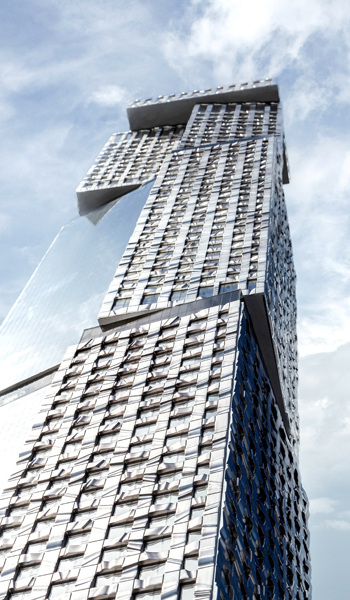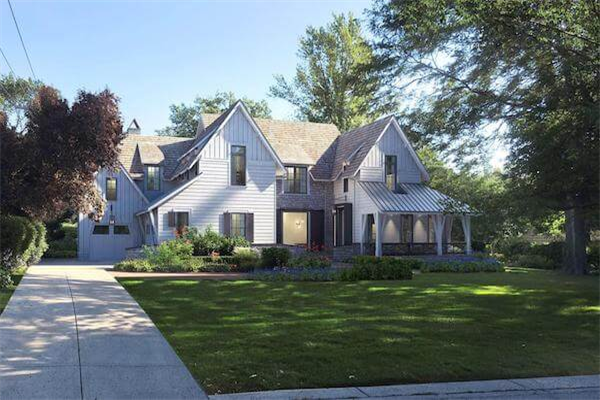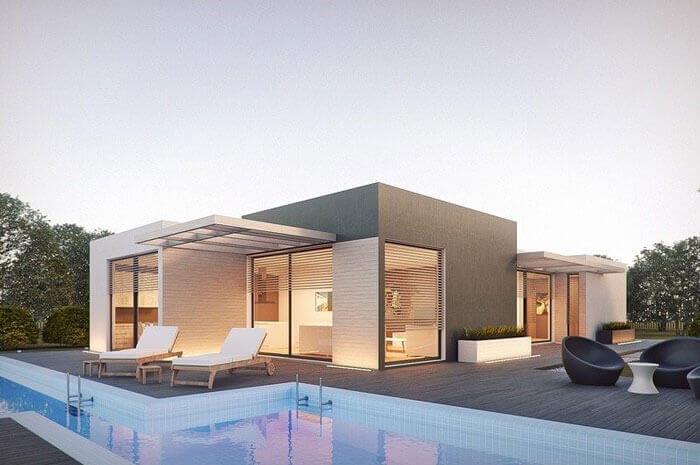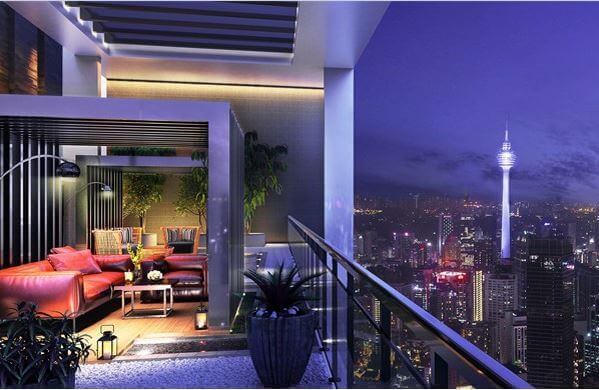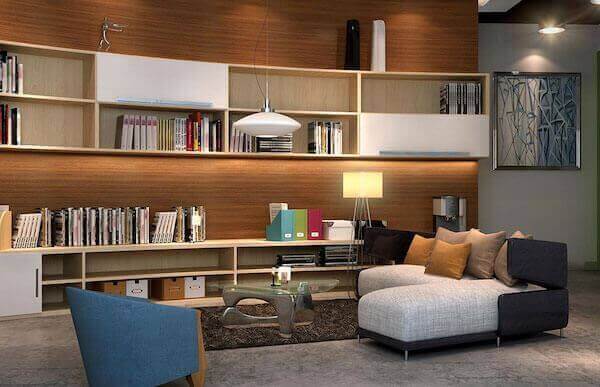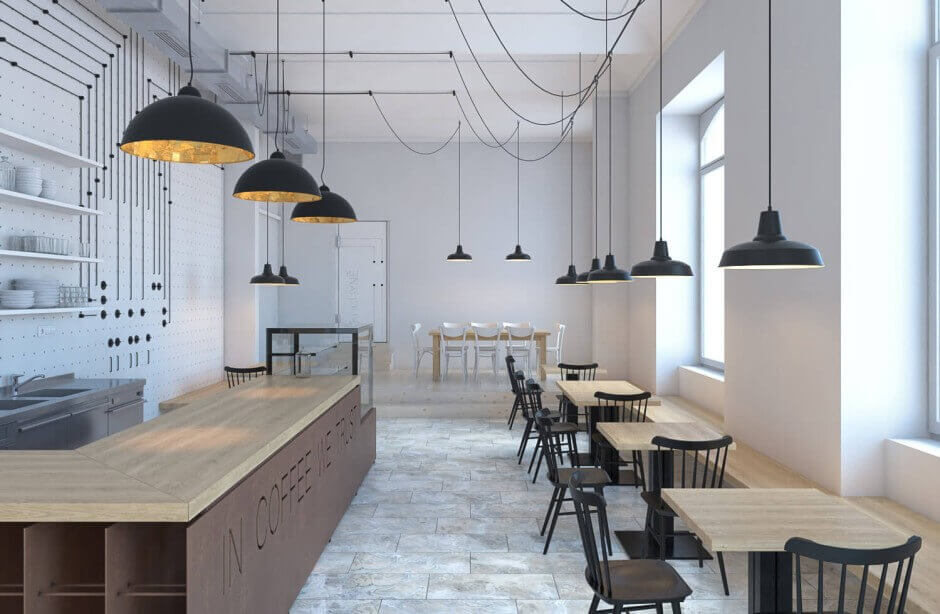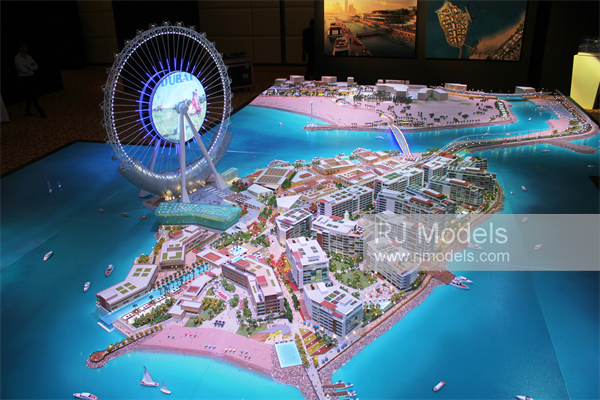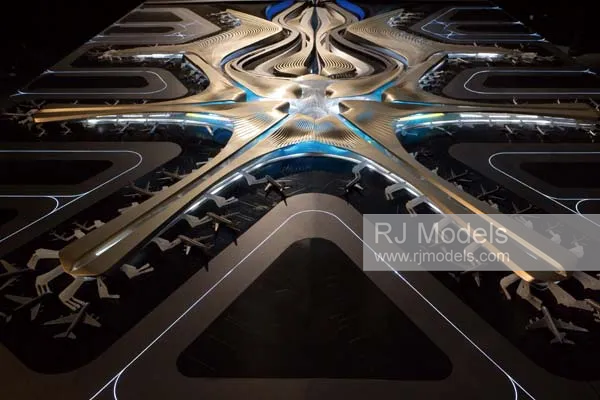3D Architectural Rendering: The Ultimate FAQ Guide
3D architectural rendering refers to the process of creating a photorealistic image of an object using dedicated computer graphics software.
It is an important artistic technology and often determines the final result.
This guide explains a wide range of elements revolving around 3D architectural rendering.
Essentially, this is fundamental because you find convincing reasons to consider the specific architectural design project.
What Is The Purpose Of 3D Architectural Rendering?
Figure 1 3D Architectural rendering
Ideally, the main purpose of a typical 3D architectural rendering is to give you a vivid picture of what the finished project will look like.
It is created for presentation to clients to understand what the project will look like upon completion.
Professional 3D architectural renders are quite indistinguishable from ordinary photos.
Thus it eliminates the need for waiting until when a project is complete to take its photos.
Of course, this is important since it makes it easy for you to establish whether the project specifications or features meet your demands.
Also, 3D architectural rendering is used for marketing.
Many developers usually go for these elements to showcase the project’s practicality to their respective clients or potential investors.
Another purpose of a three-dimension architectural rendering is for design analysis.
In many instances, structural engineers use copies of 3D architectural rendering to evaluate the project’s feasibility.
In such instances, they assess numerous aspects regarding the project to establish and correct any possible design flaws before actual construction process.
Essentially, this enhances construction of a suitable project based on different design analysis aspects.
The other purpose of 3D architectural rendering is to enable you to save time, money, and resources.
Contractors and inspectors get 3D visualization of the project hence easily determine several best techniques possible to approach it.
What Is 3D Architectural Rendering Service?
Primarily, a 3D architectural rendering service refers to a commercial service revolving around providing 3D renderings for architectural needs.
In many instances, this service is offered by different professional and accredited companies.
However, you can also find freelance independent technicians with a specialty in providing this service.
What Are The Types Of 3D Architectural Rendering?
Characteristically, 3D architectural renderings are classified into two main types as follows;
By Interior Or Exterior CG
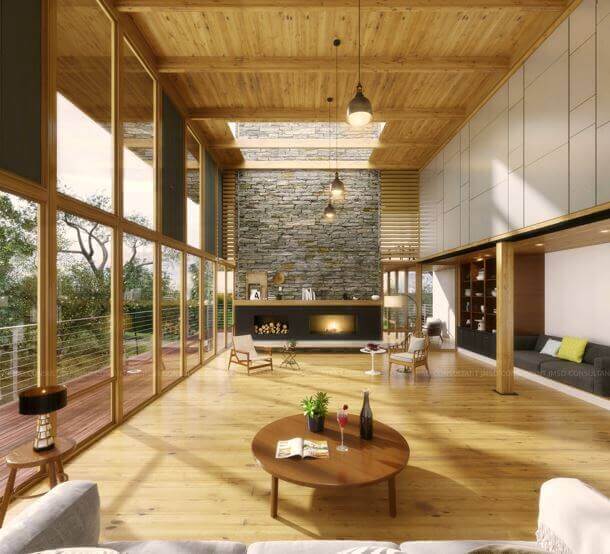
Figure 2 Interior 3D architectural rendering
Exterior 3D architectural renders enable the architect to demonstrate an infrastructure to you from any angle.
You can see it from an aerial view, close-up view, or a street view.
Thus, it becomes easy for you to determine how the proposed building fits into the surroundings.
It also gives you an idea of how it can appear if done using different materials among other things.
Interior 3D architectural renders showcase the inside of the building.
These renders demonstrate space of any architectural object, whether residential or commercial, in photorealistic quality.
The interior 3D architectural renders are ideal for showcasing furniture, materials, lighting schemes, planning, and décor.
In essence, all these aspects convey the atmosphere of a place, making it easy for you to see and feel it too.
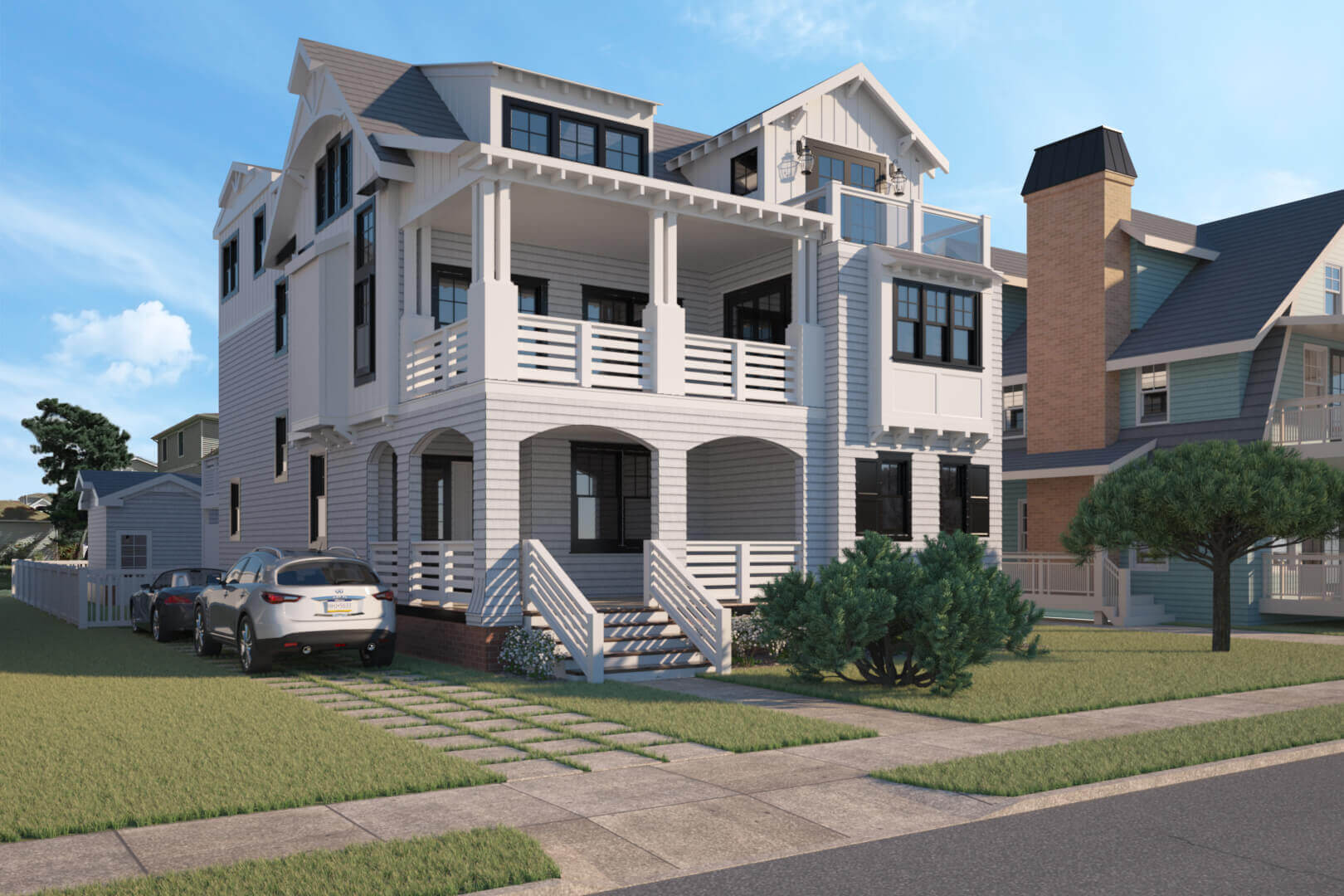
Figure 3 Exterior 3D architectural rendering and visualization
By Type Of Architectural Object
3D architectural renderings are classified into the specific type of building based on its specific features, such as the following;
-Residential – This type of 3D architectural render includes interior and exterior photos of any residential structure.
This include, apartments, townhouse, cottages, and condominiums among others.
In this case, the interior rendering of various rooms has its specifications.
-Commercial – This type of 3D architectural renders are interior and exterior visuals picturing non-residential structures.
Examples here include malls, restaurants, skyscrapers, warehouses, offices, and retails spaces among others.
How Does 3D Architectural Rendering Work?
In essence, any 3D architectural rendering project begins once you contact a studio to formulate a technical assignment.
You also need to submit all the necessary details to facilitate efficient creation of a CG project.
It starts with creating 3D architectural models and choosing the best point for viewing images, and adding lights and shade accordingly.
The artists then select the ideal secondary objects for the scenes, such as decorations based on your requests.
Once everything is in place, photorealistic textures are applied to the 3D models.
Lightings are also tweaked accordingly to generate the renders.
Primarily, images are ready at this point.
Thus, they enter the ultimate phase of the process, which is post-production.
Ideally, this entails making minor improvements like adjusting the contrast, brightness and incorporating special effects.
Once the images are ready, you can ask for revisions if need be.
The number of revisions in many instances depends on the policies of the specific studio you are working with.
Nonetheless, revision is a vital stage in 3D architectural rendering since it allows you to realign all the possible elements to suit your demands.
What Is The Difference Between 3D Architectural Rendering And 3D Architectural Modeling?
Essentially, 3D architectural rendering and modeling related to computer-generated imagery leading to misunderstanding among many people.
Thus, knowing the difference between these two computer-generated techniques is vital.
Intrinsically, it makes communication with your preferred 3D architectural modeling studio cost-effective and productive.
The key differences, in this case, are based on the following grounds;
a) Results
3D architectural modeling results in 3D file and contains a geometric representation of the object.
On the other hand, 3D architectural modeling is artistic representation of modeled objects but presented in form of a still image or animation.
b) Phases
Primarily, 3D architectural rendering and modeling are subsequent stages of CG creation.
In essence, a 3D artist creates a 3D architectural model then rendering process starts where modeling ends.
Thus, it means 3D architectural rendering is a process, which comes after 3D architectural model.
c) Tools
3D architectural modeling and rendering use different tools, software, techniques, and specialization for best results.
Notably, 3D architectural rendering uses more sophisticated and advanced software and programs such as Mental Ray, Corona Renderer, etc.
On the other hand, 3D architectural modeling uses basic software and programs such as 3ds, Maya, Rhino, etc.
d) Modification
It is pretty easy to edit and reuse 3D architectural models.
Thus, it means you can easily use a single model to create different hero shots and lifestyle images with various backgrounds.
In other words, you can create a 3D model once, and it can represent several color varieties and design options.
On the contrary, it is quite difficult to edit a 3D architectural render, particularly the animated one.
e) Uses
Both 3D architectural rendering and modeling are designed for different uses.
For instance, 3D rendering as a service comes in handy when intending to showcase benefits of the product.
3D architectural modeling, on the other hand, is a fast way of attaining different aspects of the objects such as shells, sculptures, etc.
How Long Does It Take To Render 3D Architectural Model?
Mostly, it is dependent on the actual scale of the project.
For instance, a project with relatively small rooms and buildings should take between 1-2 days.
Medium-scaled projects would take an average of 3-4 days.
However, large-scale projects tend to last longer and can take up to about one day to complete.
Even so, it is possible to create an incredible 3D architectural render faster than the aforementioned timelines.
The specific company you choose for these projects determines how fast or slow it can take to have complete results.
Therefore, it would be important to consider several factors when selecting the ideal company to handle your 3D rendering solutions.
For instance, choose a company with a professional team and use powerful hardware and programs to create your 3D renders.
This ensures you get your 3D architectural renders within shortest time possible.
What Is The Cost Of 3D Architectural Rendering?
It depends on a host of variables such as the following;
Figure 4 Interior 3D Architectural Rendering
Figure 5 3D Architectural rendering
Urgency
Ordinarily, most 3D rendering companies provide their respective services on a first-come-first-serve basis.
Thus, it means orders are usually queued to follow a laid down order.
However, if you require your project urgently, you will always spend more money.
In such instances, the service providers often dedicate more resources to your project to ensure you get it faster.
Therefore, you’ll have to spend more money than you would do for a normal order.
Complexity
Essentially, some 3D architectural renders tend to be more complicated and quite involving.
Of course, such variants tend to be more expensive than simple ones.
The level of details to be incorporated, especially for custom designs, influence the price significantly.
Number Of Revisions
Companies and artists offering 3D architectural rendering services often allow up to a limited number of revisions.
Thus, when you exceed their respective number, you’ll need to spend more money than the initial cost.
Process Output
This merely refers to the specific number of views and resolution of the final images.
Of course, the higher the resolution, the costlier the 3D renders.
In general, there is no definite cost for purchasing 3D architectural renders.
It is dependent on a wide range of elements, including the abovementioned ones.
What Is The Best 3D Architectural Rendering Software?
Essentially, professional 3D architectural renders need the use of specialized software.
In most cases, 3D artists use different programs and software in the entire project pipeline.
Ordinarily, different 3D architectural rendering studio has set its specific standards and processes.
Therefore, it could be challenging to point out a specific software as the best for 3D architectural rendering.
As such, 3D artists use software for different projects is determined by the company policies and project goals.
In other words, the most suitable software is dependent on numerous elements, such as the specific phase of the project pipeline.
Nonetheless, the commonly used software for creating 3D renders includes Maya, Rhino, Modo, Revit, 3Ds, Blender, SketchUp, and Cinema among others.
Besides, many 3D rendering artists use several plugins to attain the most quality results.
Some commonly used rendering plugins include V-Ray and Corona Render, which integrate with the popular software.
These plugins facilitate production of stunning images with precise geometry, perfect lighting, and smooth edges.
How Do You Determine Quality Of 3D Architectural Rendering?
You can use several criteria to establish the quality of 3D architectural rendering.
Even so, there are specific universal rules, which work for both interior and exterior images.
One ideal way to determine the quality is by ensuring all the objects loo natural.
In essence, it implies the objects should have accurate geometry, precise size, and high-resolution photorealistic texture.
Coincidentally, slight imperfections are what make the images appear realistic since there are no perfect objects in the world.
A second technique of determining quality of 3D architectural render is by ensuring the lights and shadows look realistic.
Excessively bright or dark images should never have any spots.
Additionally, the object’s appearance should correlate with the placement and settings of light sources.
It implies some surfaces will absorb light, others reflect, whereas some transmit it like in a stock photo.
For an exterior 3D architectural rendering, quality ensures the primary object of the image dominates the space visually.
This means the 3D render background should only complement it and not necessarily compete with it.
Besides, the angles and views should hardly be distorted since this makes the objects appear disproportionate.
Furthermore, 3D scenes must also be consistent down to the least possible details.
For interior 3D architectural rendering quality, ensure there is no intersection of geometric objects.
Also, none of the interior elements should float in the air.
Quality 3D renders also pays attention to the furniture and décor within the scene.
What Are The Techniques Used For 3D Architectural Rendering?
You can use different methods in creating 3D architectural rendering.
However, the main techniques include the following;
Figure 6 3D Architectural rendering
Ray Tracing
It is relatively an easy way to render different 3D architectural designs.
This method traces natural light either through reflection or refraction of materials available in a 3D scene.
Ideally, this technique computes each color algorithmically and attains more photorealism than many techniques.
However, it is a bit slow; hence can be irritating and inconvenient.
Scanline
It is the best 3D architectural rendering technique to consider in instances where time is of concern.
This method offers real-time rendering based on a polygon by polygon basis in 3D modeling rather than rendering using pixel by pixel.
Scanline rendering technology allows you to easily attain possible speeds of 60 frames per second when integrated with pre-computed lighting.
Ray Casting
This is an ideal 3D rendering technique for projects, which hardly requires exhibiting many details.
It renders a project using geometry of pixel by pixel and line by line.
Primarily, its use entails real-time simulation of 3D modeling.
However, it rarely attains better performance in the computational phase for best results.
What Information Is Required For 3D Architectural Rendering?
Essentially, it depends on the nature of your project.
However, it is recommended to provide as much information as possible.
The fundamental details you should provide include the following;
- Drawings or sketches of the object you need renders for
- Specifications of furniture, lighting, plumbing fixtures, etc.
- Information about materials
- CAD files or 3D models where applicable
- Your instructions
- Any information you find ideal for making 3D architectural renderings
How Many 3D Architectural Rendering Revisions Are You Entitled To?
It depends on the specific company you are dealing with.
In many instances, different studios have policies guiding revision concerns.
Some companies offer up to 10 revisions for minor adjustments for each project.
On the other hand, some offer up to 2-3 free revisions for major editing if you request within 30 working days after providing the first task.
But in many instances, you will be charged for any subsequent revisions after the third one depending on the nature of task and extent of modification.
Thus, the number of revisions you are entitled to depend entirely on the 3D architectural company you are dealing with.
What Is The Ideal Size Of 3D Architectural Renders?
It depends on your preference and the size of the project.
Ordinarily, standard 3D architectural renderings are sized to print on 8.5” by 11” or use on the web.
However, anything large is regarded as a large format 3D rendering and, in most instances, often requires additional charges.
Nonetheless, you can also get a 3D architectural rendering on a billboard of 4’ by 8’.
Besides, you can get it in a poster of 24” by 36”.
In other words, renders are available in a wide range of sizes.
Thus, the ideal size is dependent on what suits your specific requirements and preference.
What Is The Best Format For Providing Files For 3D Architectural Rendering?
You can submit your files in a wide range of formats.
Ideally, most 3D architectural rendering companies use several software and programs, which are compatible with different file formats.
It is advisable to provide drawings in different formats such as .dxf, .pdf, .ai, .dwg, among others.
You can also provide them in raster formats, which include .bmp, .tiff, .jpg, .tga, etc.
For sketches, you can provide them in .pdf and raster formats too.
Can You Alter Details During 3D Architectural Rendering?
It is possible but quite challenging, especially for an animated copy.
Technically still, 3D architectural rendering are only editable at a particular phase.
For animated 3D architectural rendering, it becomes difficult to modify or edit once the final product is complete.
Thus, in many instances, you’ll need to get a new task rather than editing a complete 3D architectural rendering.
What Are The Common Industries Using 3D Architectural Rendering?
3D architectural renderings have been instrumental in enhancing several industries in the past several years.
Some of these industries include the following;
Real Estate
Real estate companies are usually entrenched in keeping up with the ever-changing competition dynamics.
3D renderings offer the necessary sophistication for transforming this industry for the better.
Marketing And Advertising
Nowadays, it is easier to use a 3D architectural rendering to pitch to your clients and potential investors.
It is efficient since the prospective clients will be arguing from an element they can easily visualize.
Interior Design Industry
Traditionally, interior designers used drawings and sketches to articulate their vision, which was unable to capture their ideas fully.
3D architecture renderings provide an epic view making it easy to implement precisely accordingly.
Architecture
Conventional architectural practices involving pens, watercolor brushes, and physical models are becoming obsolete.
3D renderings give an accurate and better concept of the architecture. And this is important because it enables it to sell easily and obtain the relevant licenses.
What Are The Benefits Of 3D Architectural Rendering?
3D renders are beneficial in architectural field thus a worthwhile investment to consider.
Some of these benefits include the following;
Allows You To Visualize Future Projects And Changes
3D renders allow exploring various options without necessarily investing in props, travel, interior designers, photographers, and furniture.
It Streamlines Marketing And Branding
It offers a unique capacity to maintain consistency in branding and marketing over time.
Essentially, you do not need to hire a photographer, lighting specialist, designer, etc., for an ongoing series of expensive photographs.
Instead, you just seek services of a 3D artist to do it all in-house.
Enhances Communication
3D architectural renders enable your customers to understand different details and aspects of the project.
A high-quality 3D render solves communication issues by giving stakeholders a stunning 3D visualization facilitating a better understanding of complex projects.
Guarantees Stunning Accuracy And Precise Measurements
3D renderings give you control over the resulting imagery it offers.
Thus, they render precision measurements within the rendering itself.
What Types Of Structures Can You Render Using 3D Architectural Rendering?
You can render a wide range of structures using 3D architectural rendering, which includes but is not limited to the following;
- Resorts and clubs
- Office spaces
- Landscapes
- Hotels and restaurants
- Shopping centers
- Residential apartments
- Family homes
- Villas and condos
- Schools and colleges
What Are The Myths About 3D Architectural Rendering?
Often, critics argue that if 3D architectural renders are pretty significant and useful, they should become the standard in architectural industry.
Ideally, many specialists that have worked in different ways in the past decades are skeptical about adopting this technology.
Unfortunately, the skepticism is gradually turning into myths about 3D architectural rendering.
The most common myth about this technology is that it lacks customer involvement in the design process.
In the end, this myth suggests the technology leads to unhappy customers.
However, this is not necessarily true because this technology fully involves the client.
You can easily tell whether you like the design or not.
Besides, you, as the client, understand the architect’s vision better and feel confident to take part in the process.
While at it, you can easily suggest changes you want; hence the technology allows both parties to come to a comprehensive shared understanding.
What Is The Future Of 3D Architectural Rendering?
Essentially, the future of 3D architectural rendering seems brighter, particularly with 3D printing and virtual reality becoming the main thing.
Albeit be a young technology in the industry, it is set to alter the ways people interact with 3D architectural renders.
Moreover, the arrival of 3D printing is making a significant impact on 3D rendering.
What Are The Shortcomings Of 3D Architectural Rending?
The main drawback of 3D architectural rendering is the initial upfront time commitment. It comes with responsibilities; hence can take numerous weeks or months to perfectly actualize.
Secondly, this technology also lacks proper standardization. Thus, it leads to imitations from various quarters, which quickly generate copyright issues.
Contact RJ Models & We can Help You to Grow Your Business.
Our vision is providing the top quality 3D scale models to everywhere in the globe.
